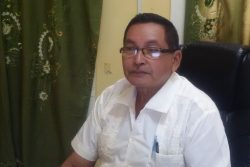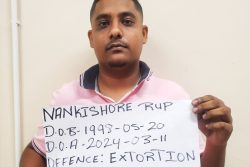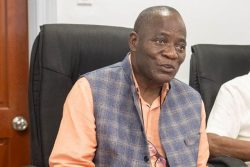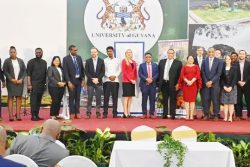Erik Helland-Hansen, the Head of the Inter-American Development Bank (IDB)’s expert panel commissioned to evaluate the Amaila Falls Hydropower project in Guyana, has reportedly withdrawn a statement where he expressed concerns that the project’s developer Sithe Global LLC had not as yet taken adequate environmental considerations into their plans.
In late March, Helland-Hansen was quoted in the Norwegian journal, Development Today, that the bank had questioned the entire dam concept. “The explanations so far have not been sufficient,” he was quoted as saying. At that time, he had reportedly said that he could not talk much on the project because of his position.
However, in a subsequent interviewwith Norwegian newspaper Aftenposten earlier this month, Helland-Hansen reportedly expressed regret over his earlier statements. “It’s not really how I meant it. I was a little excited over the quote, and I should not have talked. The panel has not come to a final conclusion,” Helland-Hansen was quoted as saying. Efforts by this newspaper to contact Helland-Hansen for comment were unsuccessful.
When asked to respond to Helland-Hansen’s original critique, Senior Vice President of Sithe Global Rafael Herz pointed this newspaper to article in the Aftenpost. He said that the panel is yet to issue a full and final report. This report by the Bank, he said, would be made in due course. “All of the recommendations and suggestions by the Expert Panel will be considered, and if feasible, will be incorporated into the Environmental and Social Impact Assessment (ESIA) and the management plans,” Herz said, when asked how the panel’s findings would impact the ESIA.
Last month, Sithe Global released an updated ESIA which was prepared by Exponent Inc. with support from Brazilian firm JGP Consultoria e Paricipacoes Ltda. Public consultations are ongoing on the document. Herz told this newspaper via email that the ESIA is now available for public comment on the Amaila Hydropower Project website, www.amailahydropower.com as well as at the head office of the Guyana Environmental Protection Agency. It is also available for comment at the National Library. “Meetings with stakeholders are scheduled to start at the end of April, with public meetings in Georgetown and Linden planned in May,” he said. Herz said that the public is invited to comment on the ESIA prior to May 22. The findings are expected to be reported in June, he said.
It is expected to be a while longer before the IDB releases its findings. The IDB expert panel has reportedly just made their first visit to the proposed area for the dam. The team would then have to make an initial report. Under normal procedure, the team would have to make a final visit and then make another report.
When this newspaper contacted former environmental adviser to the World Bank Dr Robert Goodland, he said that the prime purpose of the expert panel is to ensure that the ESIA process gets off to a reliable start. “Unfortunately, IDB seems to have appointed the panel many months too late to be helpful in ensuring the lowest cost way of meeting Guyana’s need for electricity, and in preventing or mitigating impacts, namely by seeing that the ESIA process is reliably designed and in parallel with the engineering feasibility stage which influences the ESIA,” he said.
Questioned as the how the panel’s findings could impact the IDB’s support, Goodland opined that the panel’s more important role should be to tell the IDB, the government and the proponent or contractors “what needs to be done to ensure that the Amaila project is the lowest cost (to people, especially impacted people and vulnerable ethnic minorities, and to the environment), and how the major impacts can be prevented or mitigated to acceptability.”
Goodland, while stating that he is not aware of the IDB’s decision processes, said there were a few possible outcomes. “On the one hand, if the panel tells IDB that this is a high quality, low cost project that might need minor tweaking, but basically is acceptable, IDB would be more likely to continue its support,” he said. Further he said that “if the panel concluded that this project, as designed and already being implemented before the ESIA was released would cause very expensive impacts for Guyana and its taxpayers, that its design is far from the least cost solution to Guyana’s energy needs, and that the design was flawed and very risky, then presumably IDB’s prudent course would be to have second thoughts about their support,” he said.
Stabroek News was unable to contact IDB Country Representative Marco Nicola to follow up on the issues raised by Goodland. However, previously Nicola told this newspaper that the bank is providing technical assistance for the environmental services in addition to services to syndicate the loan. Nicola also said that the process is an ongoing one. He suggested, though, that most of the funding for the actual hydropower project itself would come from the Chinese Development Bank (CDB).








